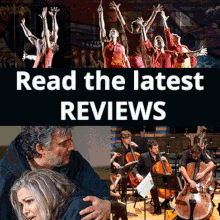When Sergei Rachmaninov left his native Russia following the October Revolution of 1917, he found himself a man without a country. Upon arriving in the United States, however, he gained a permanent artistic home with the Philadelphia Orchestra. Perhaps no partnership between a composer and a symphony orchestra looms as large in the consciousness of this country’s musical life – and it’s an association that continues to be strongly held as the 150th anniversary of Rachmaninov’s birth draws near on 1st April.
Rachmaninov’s relationship with the Philadelphians as a conductor and a (very accomplished!) piano soloist began years before his permanent migration to America. But it’s as a composer, particularly in the pieces that he crafted specifically for Philadelphia – his Third Symphony and Fourth Piano Concerto, the Symphonic Dances and Rhapsody on a Theme of Paganini – that you hear the close bond he held with music directors Leopold Stokowski and Eugene Ormandy, as well as the musicians legendary for their vaunted string sound and warm-toned brass.
In describing the inspiration that forged the collaboration, Rachmaninov said that “Philadelphia has the finest orchestra I have ever heard at any time or any place in my whole life. I don’t know that I would be exaggerating if I said that it is the finest orchestra the world has ever heard.” He likened it to a great artistic partnership: “Years ago, I composed for the great Chaliapin. Now he is dead, and so I compose for a new kind of artist, the Philadelphia Orchestra.”
The relationship, and the tradition, has continued without interruption from the 1930s and '40s until today. “Given the long tenures of our musicians – often 30 to 40 years – there is a legacy that is passed from musician to musician,” says Jeremy Rothman, chief programming officer of the Philadelphia Orchestra. “There are many influences, from the sound of the hall to the kind of repertoire the orchestra focused on in any given era, that has shaped its unique sound.”
The evolution of Rachmaninov’s sound throughout the eras represents the ultimate expression of classical music as a living entity, open to interpretation while remaining fundamentally steady, according to Rothman.
“Stokowski experimented with ‘free bowing’ and unusual seating arrangements,” he says. “Ormandy built upon that with a sound that was constructed for the new recording era. Riccardo Muti created a more flexible, dynamic orchestra. Wolfgang Sawallisch introduced a more classical style to many new areas of the repertoire, and Christoph Eschenbach expanded the contemporary style of the Orchestra. Now, Yannick [Nézet-Séguin] builds on those collective traditions to shape a sound that pays tribute to the history of the orchestra, is flexible in a variety of styles and is joyful and passionate in its music-making.”
The give and take between tradition and modern rethinking were evident in several recent performances of Rachmaninov’s works, including the two-day marathon at Verizon Hall that saw all four of his piano concertos – plus the Rhapsody, twice! – performed by Yuja Wang.
Although Wang’s astonishingly polished and emotionally engaged work at the keyboard was the star of the show, I couldn’t help noticing the interesting details that Nézet-Séguin drew from the corps of musicians supporting her. From the gentle transparency of the winds in the Adagio sostenuto – a clear rebuke to anyone who would describe Rachmaninov’s style as all flash and no delicacy – to the beautifully balanced brass chorales in First Piano Concerto’s Vivace section, I sensed an orchestra living with the music, not resting on rightly earned laurels.
Nézet-Séguin occasionally turned the dials up, as did former principal guest conductor Stéphane Denève, when he returned to Philadelphia to conduct the Third Symphony a few weeks later. But in all cases, the balance between bombast and tension was maintained nicely. The current performance practices will be captured on a complete symphony cycle recorded by Deutsche Grammophon, which has thus far produced a disc featuring the First Symphony and Symphonic Dances.
“When you listen to the Symphonic Dances, you can hear the hallmarks of the Philadelphia string, wind and brass style,” says Rothman. “Yannick continues to draw on the legacy of performance traditions while showcasing the current virtuosity of the ensemble. You should hear many of the hallmarks of the Orchestra’s sustained and beautiful sonorities, mixed with the precision and energy of the current slate of star players. Plus, we now capture the recordings in resolution quality and surround sound like never before.”
Recordings often accounted for the discovery of Rachmaninov’s symphonies, particularly in their legendary releases led by Ormandy. Consequently, the style committed to record became the standard in the concert hall. When I ask Rothman about the standard cuts applied to Rachmaninov’s Symphony no. 2 in E minor, which seem to have fallen out of favor, his answer surprises me.
“I believe that the cuts were needed in order to get the work to fit on a single disc,” Rothman explains. “Those cuts, which were authorized by Rachmaninov, often found their way into live performances. But these days, conductors usually perform the work in its original entirety, without any of the cuts.”
To this day, the Orchestra retains a direct connection with the extended Rachmaninov family. At the performance of the Third Symphony that I attended in February, the guest of honor was Tatiana Copeland, whose mother was a niece of the composer. Mrs Copeland was named for Rachmaninov’s own daughter, Tatiana Sergeyevna.
Rachmaninov also remains a popular cornerstone of the repertory in Philadelphia. All four performances of the piano concertos with Yuja Wang at Verizon Hall sold out well in advance, according to an Orchestra spokeswoman, and the queue for returns when the program was brought to Carnegie Hall started in the wee hours of the morning. Denève’s performance of the Third Symphony also drew large crowds, despite an ongoing cyber incident that hampered the Orchestra’s ability to sell tickets at the time.
The recently announced 2023-2024 season will continue to honor the composer’s sesquicentennial, with performances of his First and Second Symphonies and a repeat of his Third Piano Concerto, with Leif Ove Andsnes as soloist.
For Rothman, a native Philadelphian, the chance to hear these works in repeatedly new contexts reinvigorates the love he’s had for his hometown orchestra since childhood. “My parents started bringing me to Saturday morning family concerts at a young age,” he tells me. “Even as a kid, I remembered being mesmerized by the sound of the strings – it was this rich, unified sound that was completely enveloping. As I began to discover music on my own, and as I started to travel the world and hear other orchestras, I realized just how special the Philadelphians are, how unique and instantly identifiable the sound is.”
It is the same sound that captivated Rachmaninov over a century ago, inspiring him to put pen to paper and create the works that now define the ethos of this orchestra. “The orchestra plays with a special passion and emotion every single day,” Rothman says. “It is not only virtuosic, with musicians of the highest technical level, but they play together, move together, and make music together as an ensemble with a shared spirit.”




